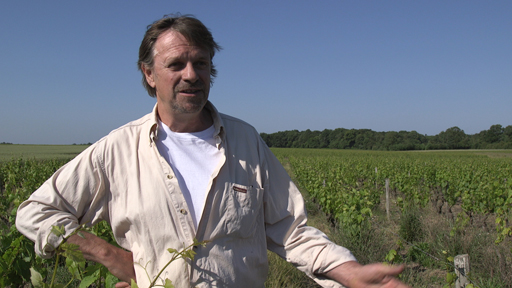4 Using your understanding of why you are listening
In this section, you will meet Lionel. Understanding why you are listening will help you decide what to focus on as you listen. This is what you will practise in the next activities.
Activity 13
a.
a. L’industrie viticole en crise: Lionel Truet fait face à un avenir incertain
b.
b. Lionel Truet : un vigneron satisfait de sa vie sur le vignoble familial
The correct answer is b.
How did you come to your choice?
Answer
b
You may have grasped the general sense (without necessarily understanding every single word) of quite complex phrases such as ‘le désir de revenir sur la propriété familiale’, ‘si serait à refaire, je le referais’, ‘ce qui me rend heureux c’est de pouvoir vivre une passion’, ‘être mon propre patron’, ‘de faire quelque chose que j’aime’.
Or you may have picked out key individual words and phrases such as ‘passion’, ‘désir’, ‘propriété familiale’, ‘heureux’, ‘liberté’, ‘plaisir’.
Whichever of these approaches you used, you were probably also helped by the visual clues showing a clearly happy Lionel working in what is obviously a small (and therefore possibly family) wine-producing business. You may also have been influenced by the generally positive tone of Lionel’s voice and the absence of any words related to crises or difficulties.
Activity 14
Listen again to Lionel and answer the questions below in English:

Transcript
- How long has Lionel been a wine producer?
- How long did Lionel work for the SNCF in the Paris region?
- How many children does Lionel have? How many boys? How many girls?
- In which year did Lionel return to the family vineyard?
- How large is the vineyard?
What strategies did you use before and during listening?
Answer
1 – 25 years; 2 – 10/10-12 years; 3 – four, three, one; 5 – 1990; 6 – 6 hectares
When you read the questions before listening, you probably realised at once that all of the required information involved numbers, so when you came to listen you would have been paying particular attention to the numbers you could hear. You might have also tried to hear the word ‘ans’ or words such as ‘depuis ’ or ‘pendant’ which act as a signal that a period of time is being spoken about. You might also have listened for words such as ‘presque’ and ‘près de’ indicating an approximate period of time. To get the number of children, you would have been listening for the words ‘enfants’, ‘garçon’ and ‘fille’. For the size of the vineyard, you would have listened for words indicating a surface area, perhaps using your cultural knowledge that this is measured in hectares in France. For a date, you would be paying attention to any phrases starting ‘mille-neuf-cent’ or ‘deuxmille’. Finally, you probably paused and repeated the recording to confirm your understanding of the figures. As a listening comprehension strategy, this is no different to asking an interlocutor to repeat something in face-to-face conversation.
